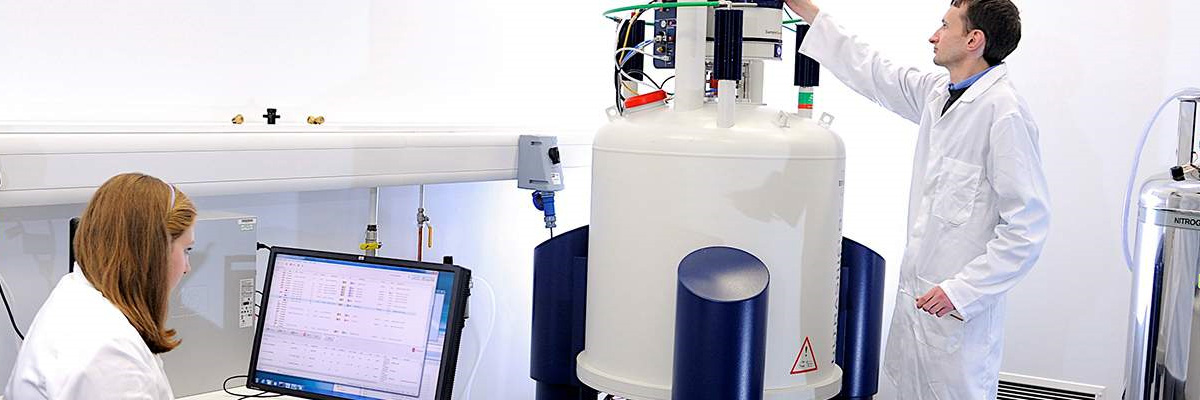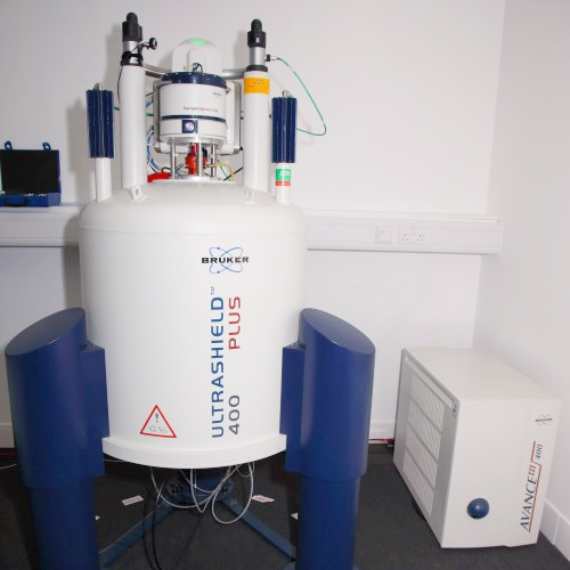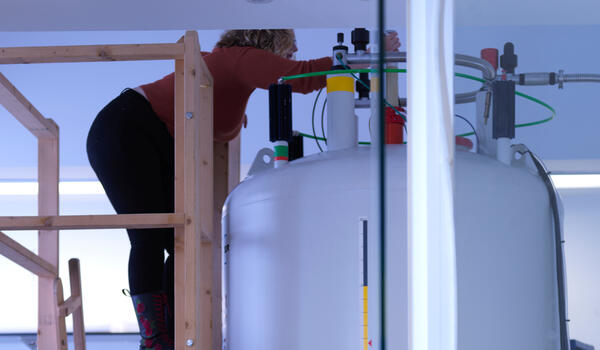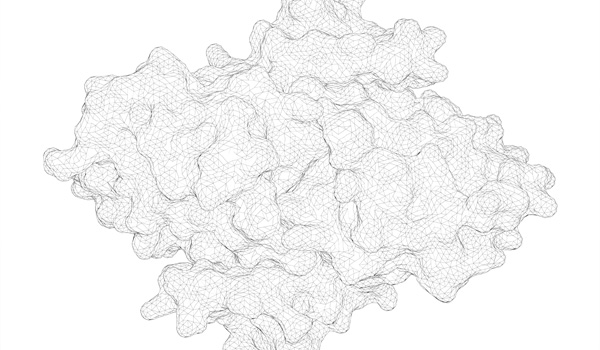The solution-state NMR facilities are located in A73/A74 Faraday Building and are used for both research and teaching.
The instruments are run in open access mode 24/7, but users must have suitable training before being allowed access to the NMR suites, so contact Dr Geoffrey Akien beforehand. Trained undergraduates can access the space by themselves from 9 am-5 pm, Monday to Friday, but must be supervised outside of these hours.
During peak hours (Monday to Friday, 8 am-6 pm) the maximum time allowed per experiment is 15 minutes, although users may have more than one experiment per sample. To maintain responsive access for others, the "Priority" ability is enabled for all users. At busy times of the year, the peak/off-peak timings may change to maximise throughput of samples.
Liquid nitrogen fills are generally carried out every Monday morning, but one instrument will always be available for immediate use. Liquid helium fills take place approximately every 5-6 months, and users will be advised by email when these take place, and if there are any other scheduled interruptions. A list of activity is also maintained on the Chemistry Booking System.





